5 Things to Know about Holiday Shoppers This Season
From inflation concerns to in-store shopping, KPMG’s latest holiday survey dives into when, where, and how consumers want to shop.

In a new report by accounting titan KPMG, rising prices topped respondents’ list of concerns heading into the holidays.
For its “Consumer Pulse Survey: Holiday 2022” survey, KPMG reached out to around 900 Americans to get a sense of their holiday plans, including what they’ll spend and on who.
Here are five important takeaways from the report.
Consumers will likely spend more on gifts this year, but many will give gifts to fewer people.
Holiday shoppers plan to spend, on average, $1,072 this season, a 6 percent increase compared with 2021. Nearly 44 percent plan to spend $500 to $2,000.
Notably, compared with the prior year, this year’s increased spending is expected to be in essential rather than discretionary categories.
“While consumers remain resilient and plan to spend a bit more this holiday season, it will likely not outpace inflation,” said Matt Kramer, KPMG’s consumer and retail national sector leader.
“Consumers will be looking for promotions this holiday season and retailers should be looking to respond by having desirable gifts for the budget conscious consumer.”
While shoppers may be spending more, their gifting list could be getting shorter.
One in four respondents said they would buy gifts for fewer people this year. Only 14 percent expect to buy presents for more people.
Less than half of respondents said they would buy holiday gifts for their parents or in-laws.
Fewer respondents plan to buy gifts for their significant other, siblings, friends, grandparents, and co-workers.
Shoppers will spend an estimated $250 per year per gift recipient this year, said the report, an 11 percent increase compared with $225 last year.
As for what they’ll be buying, the top choice (55 percent) is apparel followed by retail gift cards and gift certificates at 55 percent. Of those surveyed, 24 percent plan to buy jewelry, flat against last year’s count.
Inflation is the top concern for consumers.
Inflation topped the list of shopper concerns with 85 percent of those surveyed saying they were at least somewhat concerned about inflation.
The Consumer Price Index, which measures the average change in prices over time consumers will pay for a basket of goods and services, rose 8 percent year-over-year in August and 0.1 percent month-over-month.
In response to inflation concerns, 37 percent said they would buy fewer gifts per person while 34 percent plan to buy less expensive gifts.
However, 21 percent of respondents concerned said they would not change their behavior.
The second-most prevalent concern for shoppers (63 percent) is out-of-stock items.
To get that perfect gift before it sells out, respondents plan to shop early (46 percent) and shop online (35 percent).
The third-biggest concern is delayed shipping at 57 percent. The most popular solution for that was shopping early (53 percent), followed by shopping more in person (25 percent).
Fewer consumers will be shopping early.
A majority of holiday shoppers are not planning to shop as early as they did in 2020 and 2021.
There will still be an early start, with 52 percent starting in October or earlier, but that’s down from last year’s 61 percent.
Most holiday shoppers plan on shopping Black Friday sales (60 percent) and Cyber Monday (51 percent).
For the first time, Amazon is holding a second Prime Day sale, slated for Oct.11-12, and 42 percent of respondents plan to shop on those days.
As online shopping popularity increases, many still want to buy jewelry in person.
Looking at shopping preferences, 36 percent of respondents said they prefer to shop online rather than in store, up from 23 percent last year.
However, when buying jewelry, nearly half of respondents (49 percent) said they would prefer to have that experience in person.
The same was said for the apparel, decor, furniture, and automotive categories.
When doing holiday shopping research, retailer websites were the top choice at 52 percent followed by word of mouth from family and friends (51 percent).
As for where else consumers will shop, a majority of respondents (73 percent) said they were “likely” or “extremely likely” to shop at mass market retailers, followed by discount stores (56 percent).
Notably, luxury department stores were at the bottom of the list at 18 percent.
Travel and holiday gatherings are back.
Consumers are planning to attend more holiday gatherings this year, 5.9 on average compared with 5.5 last year, with family events being the most popular choice.
In preparation for the holiday fun, 12 percent of respondents said they planned to buy jewelry to wear. Nearly one-quarter (24 percent) will buy a host gift.
Travel is one of jewelry’s main competitors in the quest for discretionary dollars, and nearly one-third of respondents plan to travel this Thanksgiving, up from 2021.
More than one-third of respondents plan to travel for the winter holidays, 5 percent more than in 2021.
Travelers are also expected to pay more to get to these destinations this year. Expected travel spend this year is $1,388, a 26 percent increase compared with $1,106 last year.
The Latest

She is remembered as an artist who loved her craft and was devoted to her faith, her friends, and her family.

It joins the company’s other manufacturing facilities globally, including in India, Botswana, and Namibia.
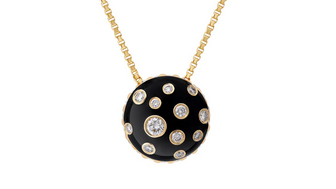
The polka dot pattern transcends time and has re-emerged as a trend in jewelry through round-shaped gemstones.

How Jewelers of America’s 20 Under 40 are leading to ensure a brighter future for the jewelry industry.

Vanessa Hickman, 49, allegedly sold a diamond bracelet that was mistakenly sent to her home.


GIA’s former president and CEO was presented with the Richard T. Liddicoat Award for Distinguished Achievement.

Social media experts spoke about protecting brand reputation through behaving mindfully online.

Roseco’s 704-page catalog showcases new lab-grown diamonds, findings, tools & more—available in print or interactive digital editions.

In 2026, the three will come together as “House of Brands,” with Gallet sold in Breitling stores and Universal Genève sold separately.

The second drop, which includes more Elphaba-inspired pieces from additional designers, will continue to benefit nonprofit Dreams of Hope.

Second-generation jeweler Sean Dunn has taken on the role.

Amber Pepper’s main focus will be on digital innovation and engaging younger consumers.

Called “Origin by De Beers Group,” the loose, polished diamonds are being sold in a total of 30 stores in the United States and Canada.
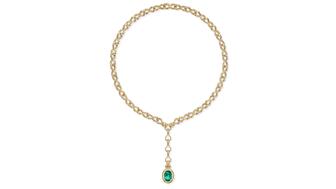
The lariat necklace features a 4.88-carat oval-cut Zambian emerald in 18-karat yellow gold.

A 43-carat sapphire brooch from the Vanderbilt collection was the top lot of the Geneva sale.
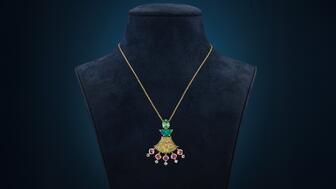
Rau is a fourth-generation art and antique dealer from M.S. Rau gallery whose first jewelry collection merges artifacts with modern design.

Former De Beers sustainability leader Purvi Shah will take over the role in February 2026.

La Joux-Perret is based in La Chaux-de-Fonds, Switzerland, and makes solar quartz as well as mechanical watch movements.

She previously taught at Gem-A and is the founder of The Gem Academy.

The British actress and her daughter modeled pieces from the brand’s new “Palette” capsule for its “Once Upon a Time” holiday campaign.

Plus, the tech giant shares the steps retailers should take if they believe they’re a victim of a review extortion scam.

Danny and Gaby Shaftel are now Shaftel Diamonds’ CEO and chief operating officer, respectively.

The jewelry manufacturer’s seasonal offering features its new “Melodie” bangles, as well as mini stud earrings and layering pieces.
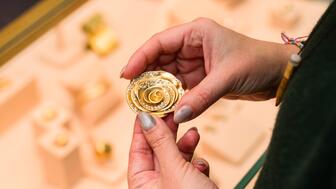
With more than 140 activations taking place in New York City now through Nov. 23, these 12 events are can’t-miss moments.

The Chapter 11 filing follows the resignation of CEO Moti Ferder, who stepped down after an investigation into the company’s finances.

The artwork is part of an exhibition featuring works by Kathleen Ryan, an artist known for her gemstone-studded rotting fruit sculptures.
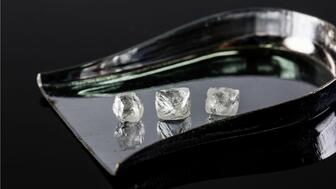
Mark Wall, president and CEO of Canadian mining company Mountain Province Diamonds, will vacate his position next month.



























